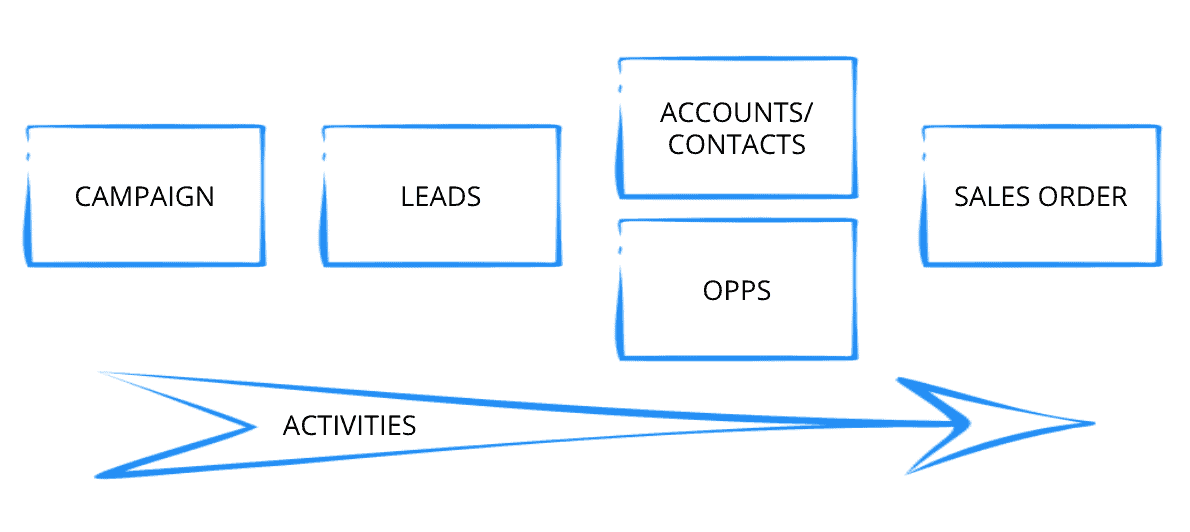
Defend Your Spend: How to Demonstrate Marketing Impact
The historical nature of marketing creates a greater sense of urgency for marketers to defend their spend. While Return on Marketing Investment (ROMI) is a KPI that C-level executives and board members expect to see on a regular basis, many marketers are being asked to provide more granular detail that can demonstrate pipeline creation and revenue contribution by campaign or program. Additionally, marketing leaders want to demonstrate that decisions on marketing campaigns and spend are data driven.
In a recent roundtable discussion with private equity and venture capital firms, we discussed why it’s so important for marketers to have reliable data that supports how their campaigns contribute to the sales funnel and, ultimately, revenue. According to Dave Lambert of Right Side Capital Management, “For us investors, we strongly encourage our companies to lead all investor updates with the critical KPIs for their business that provide the best insights into the overall health of business, including marketing ROI and pipeline creation.”
In order to produce reporting that is accurate and reliable, we’ve assembled five best practices to ensure success:
ESSENTIAL DATA ELEMENTS
Before you can begin to calculate ROI, there are required data elements that must be present; without these elements, reporting would be incomplete or inaccurate. These elements can reside in your CRM system and/or your marketing automation system. Let’s consider how the basic marketing campaign process typically works.

Campaigns – In some organizations, campaigns are managed in their CRM system, while others choose to manage it in their marketing automation system; either way, the campaign object is essential for accurate attribution.
Leads – Successful marketing campaigns result in leads, which generally reside in the marketing automation systems, CRM, or both. Be sure that leads have an accurate lead source by assigning them to the appropriate campaign(s).
Accounts/Contacts – When leads meet a certain level of qualification, they’re typically converted to an account record or assigned to an existing account if one already exists. The lead source should be attached to the account and contact objects upon conversion to ensure accurate attribution.
Opportunities – Upon further qualification, leads are converted to sales opportunities and move through the sales funnel depending on additional qualifiers. Opportunities should include the account name, main contacts/buyers, estimated contract value, and the correct lead source.
Sales Order – When a sales opportunity is closed, a sales order is generated which typically includes the account name, billing contact, and actual contract value.
Activities – Activities are the elements that connect all the dots from lead to sales order across your various systems. From various campaign activities like email sends, clicks, and/or form completions to lead conversions to the various opportunity activities, ensuring that all of these data elements are present and contain data is essential to producing ROI reporting.
ORGANIZE CAMPAIGN COSTS
Did you know that only 30% of marketers are tracking campaign costs, and those marketers are only tracking 20% of their campaigns? We realize that it can be hard to track spend on things like email campaigns, but it’s valuable to establish a way to associate costs with all marketing initiatives. Be sure to correlate costs with each of your products or services directly. After all, marketers are expected to have these details available when asked.
“I certainly think, metrics are critically important, but there is room for more. There is a place to sit there and say, ‘Hey, I do have a gut feel about what the market needs here.’ It’s informed by data, but it isn’t a linear transgression from what other people are doing. Sure as hell, when I throw that first stone and I take that gut-feel innovative step, you’ve got to then measure and adapt and be realistic about the success or failure of that. And so I think that basic practice of not being afraid to take a stab at something, but then kind of routinely and maniacally measure it after you take that first step is important.”
Morgan Flager, Managing Partner, Silverton Partners
NAMING CONVENTIONS & DATA HYGIENE
Be sure to have a standard and straightforward way of naming your marketing campaigns and all other associated items. Eliminite the ability to casually add messy data by using good descriptors and keeping it simple and standardized across your entire organization and in all of your platforms. Establish data entry rules to ensure all required data elements are present and updated when appropriate.
PRIORITIZE ACTIVITIES
Which activities do you care about? The most common activities that marketers use over time and should track carefully include email campaigns, link click-throughs, content downloads, webinar or event participation and more; these activities can tell the story of how prospect A became customer A. Think about how you organize and track this data now so it’s accessible and easy to understand when it’s time to share KPI’s with your leadership.
“We have to understand that if you just look at data and you’re not stepping back looking at the overall picture, that can be pretty dangerous. And so there’s probably a lot to how we balance that gut feeling. Only 21% of companies are able to fully measure marketing’s contribution to revenue. So we’re expecting people to make data driven decisions, but not all those people have the right data in place. ”
Lacey Miller, Director of Marketing, Vertify
AUTOMATE DATA MOVEMENT
Whether your CRM and marketing automation systems are connected via native integration or not connected at all, consider your customer data journey. Review your existing CRM and marketing automation systems to assess if key data elements are moving seamlessly from one system to another; manual processes are tedious and increase error rates. Native integrations don’t always provide access to all standard and custom objects. An ideal integration should automate the movement, management, and control of data, making it easier to source the required data to demonstrate marketing ROI.
When you’re looking for ways to effectively defend your marketing spend, we hope these five best practices will help you produce marketing ROI data that garners the insights to make informed data-driven decisions. After all, we know how critical it is for today’s modern-day marketers to have reliable data that supports their campaign’s contributions to the bottom line.